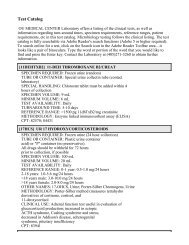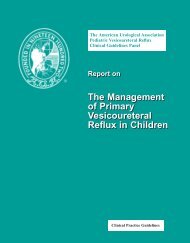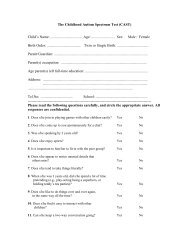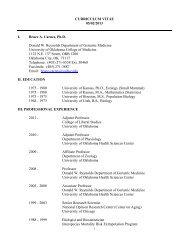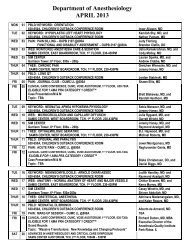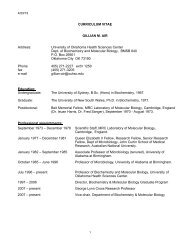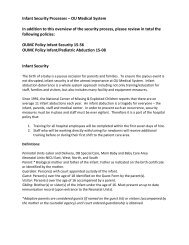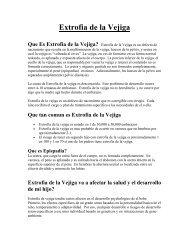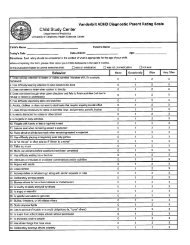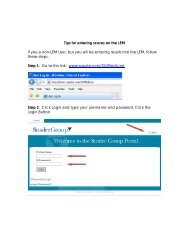Communities Advancing Resilience Toolkit (CART ... - OU Medicine
Communities Advancing Resilience Toolkit (CART ... - OU Medicine
Communities Advancing Resilience Toolkit (CART ... - OU Medicine
You also want an ePaper? Increase the reach of your titles
YUMPU automatically turns print PDFs into web optimized ePapers that Google loves.
internal weaknesses and avoid external threats. Begin to develop these strategies by<br />
matching weaknesses to threats so you can see your vulnerabilities more clearly.<br />
Prioritize your strategies based on the importance and urgency of issues. Ultimately, you<br />
would like to maximize strengths and minimize weaknesses so that you can take<br />
advantage of opportunities and alleviate threats. See the template in Appendix C.<br />
Example<br />
Strengths Weaknesses<br />
Opportunities S-O Strategies W-O Strategies<br />
Threats S-T Strategies W-T Strategies<br />
For a simple example illustrating how to create strategies, assume that you are an<br />
organized volunteer response team in a community that is threatened annually by floods.<br />
Your objective is to increase all-hazards neighborhood preparedness. Your most<br />
important strengths are effective communication and engagement regarding floodrelated<br />
issues, along with a core group of volunteers with experience in flood<br />
preparedness and response. Your primary weaknesses are lack of experience dealing with<br />
hazards other than flooding, complacency about all-hazards preparedness due to success<br />
in handling floods, and lack of procedures for using volunteers in other than flood-related<br />
activities. Your community faces potential natural, technological, and human-caused<br />
threats other than flooding. A neighboring state recently experienced a major earthquake<br />
which has raised awareness of potential disasters among members of your community.<br />
You consider this increased awareness an opportunity to engage those community<br />
members in all-hazards preparedness activities. One S-O strategy is to use your<br />
established communication network to connect with neighbors, capitalizing on the<br />
increased awareness to engage community members in all-hazards disaster preparedness<br />
for themselves and their families.<br />
Members of your community regularly volunteer for flood preparedness and response<br />
activities for which they have considerable experience. These community members will<br />
likely volunteer spontaneously in the event of other types of disasters as well, but you<br />
anticipate being ill equipped to handle them which is a weakness. One W-O strategy is to<br />
<strong>Communities</strong> <strong>Advancing</strong> <strong>Resilience</strong> <strong>Toolkit</strong> (<strong>CART</strong>) Page 44



